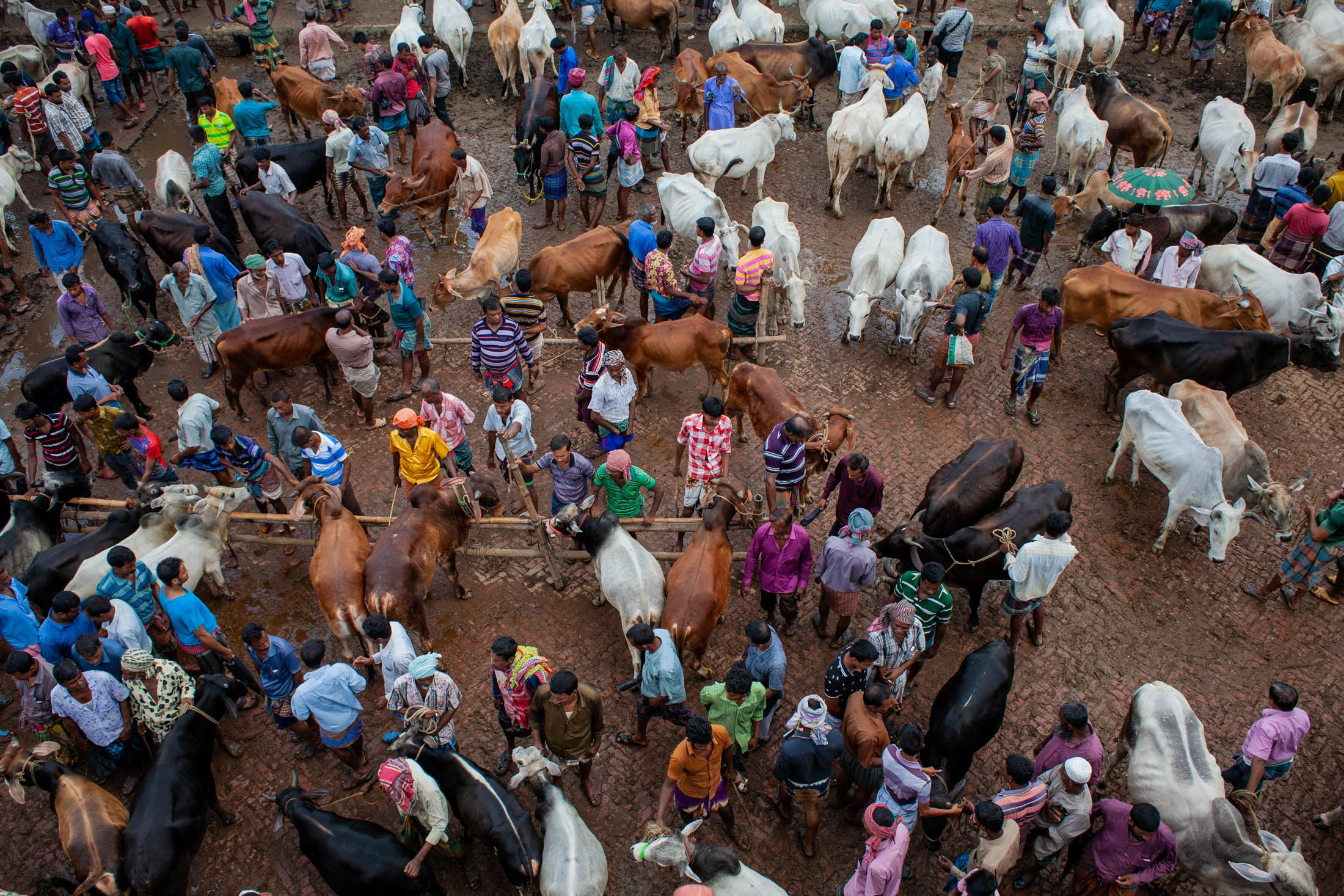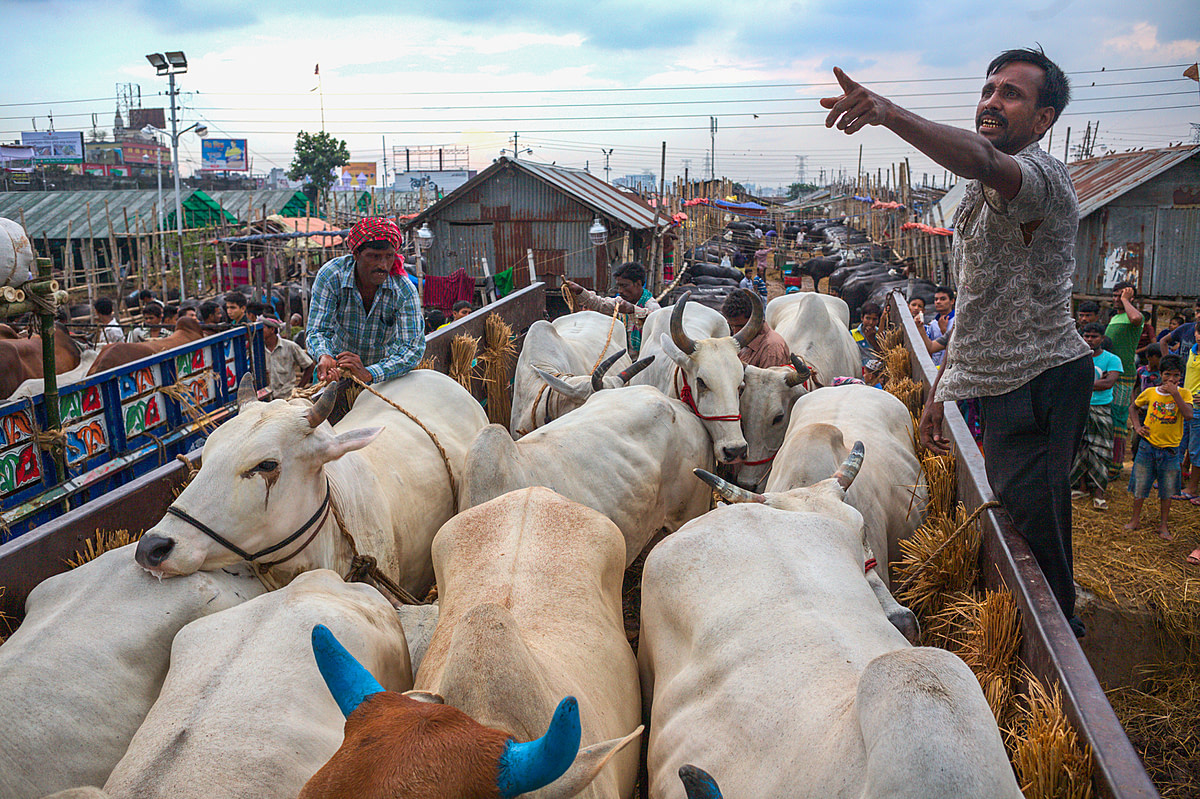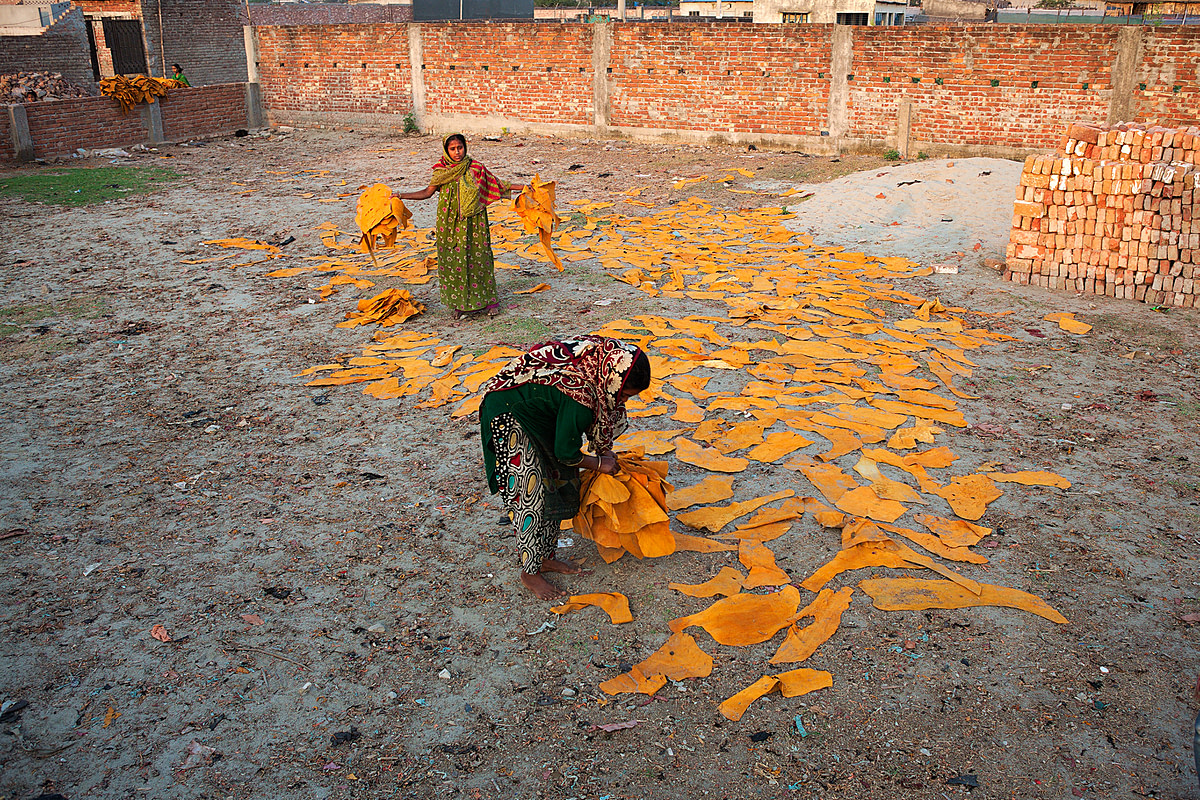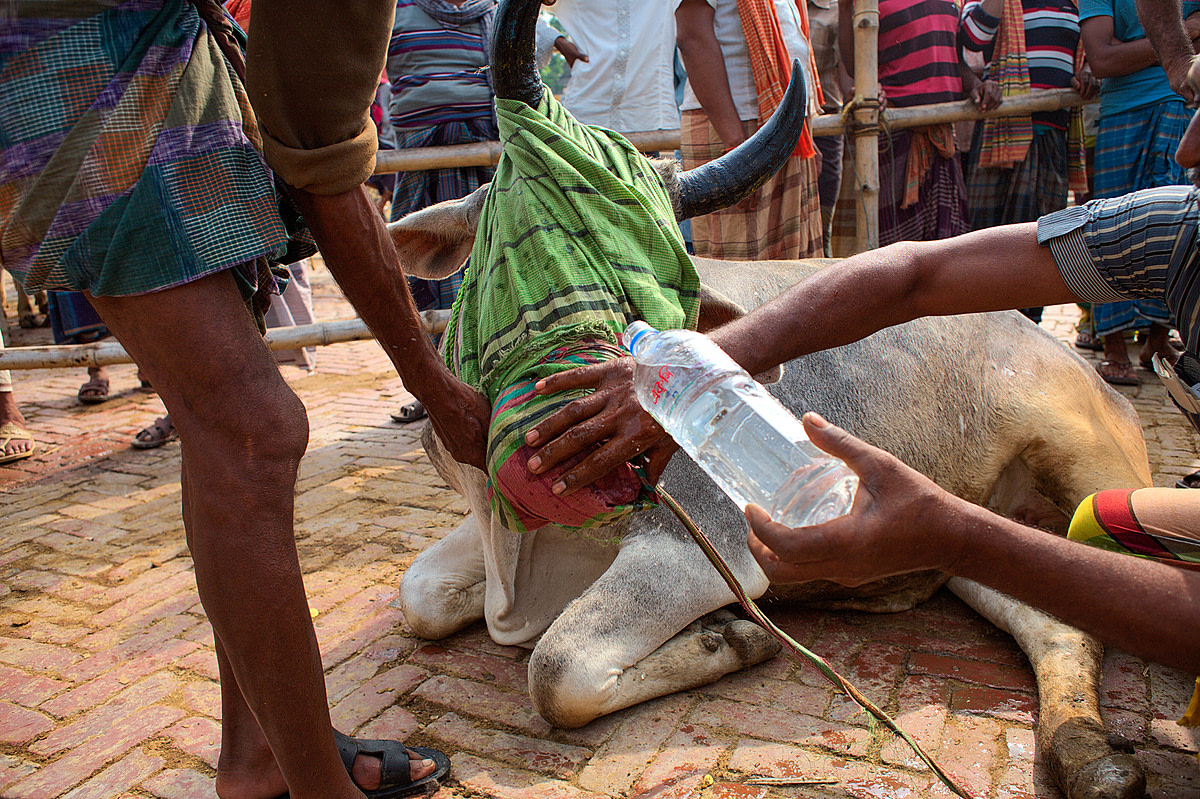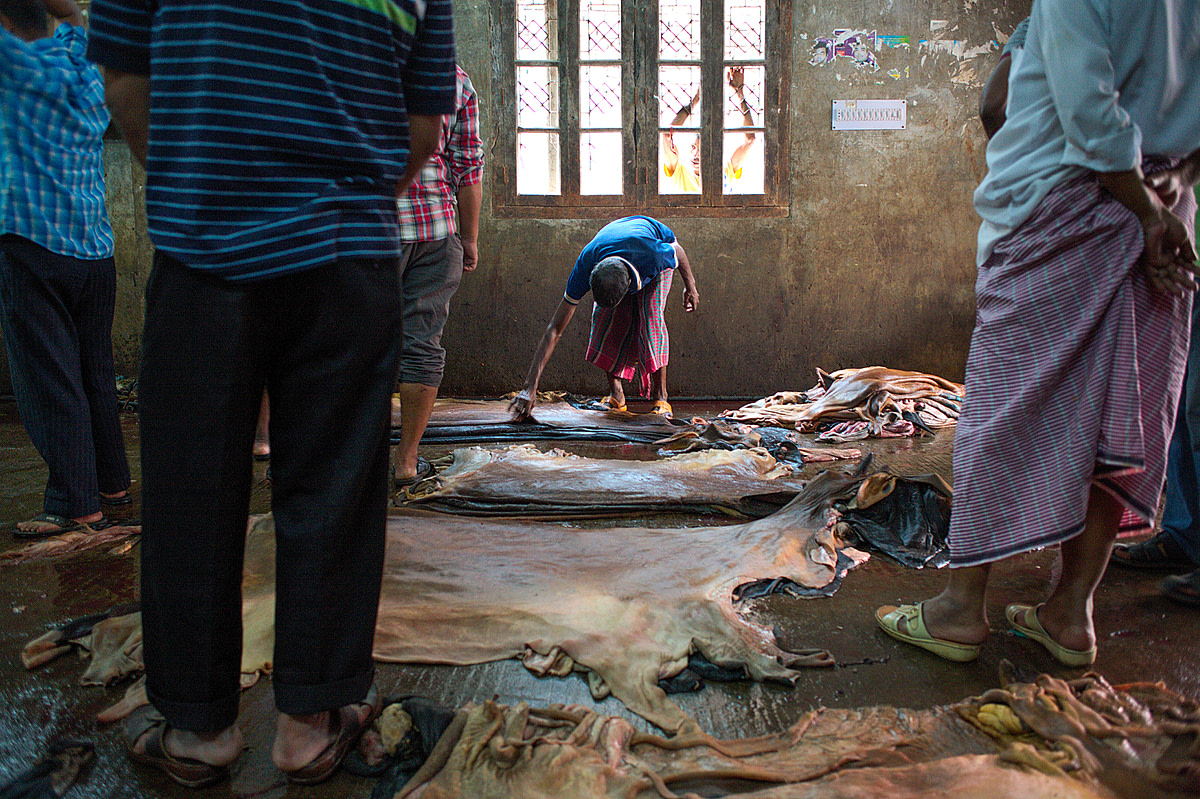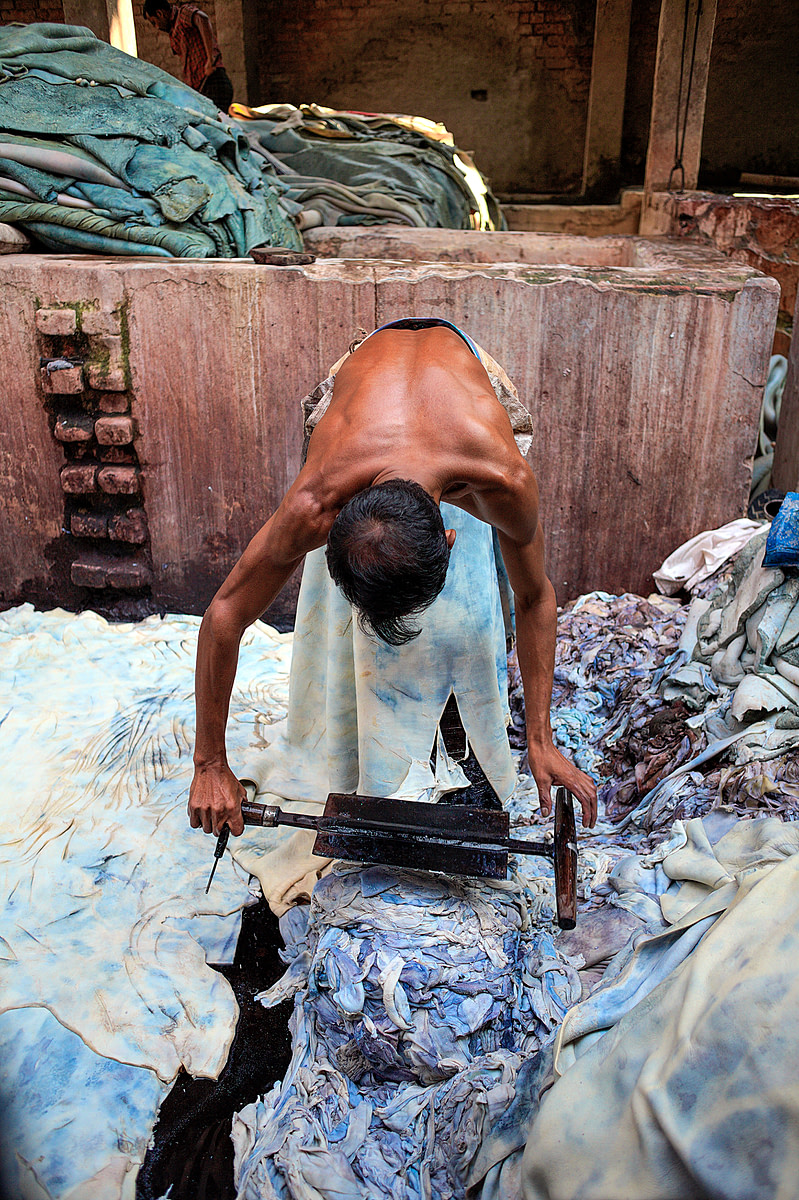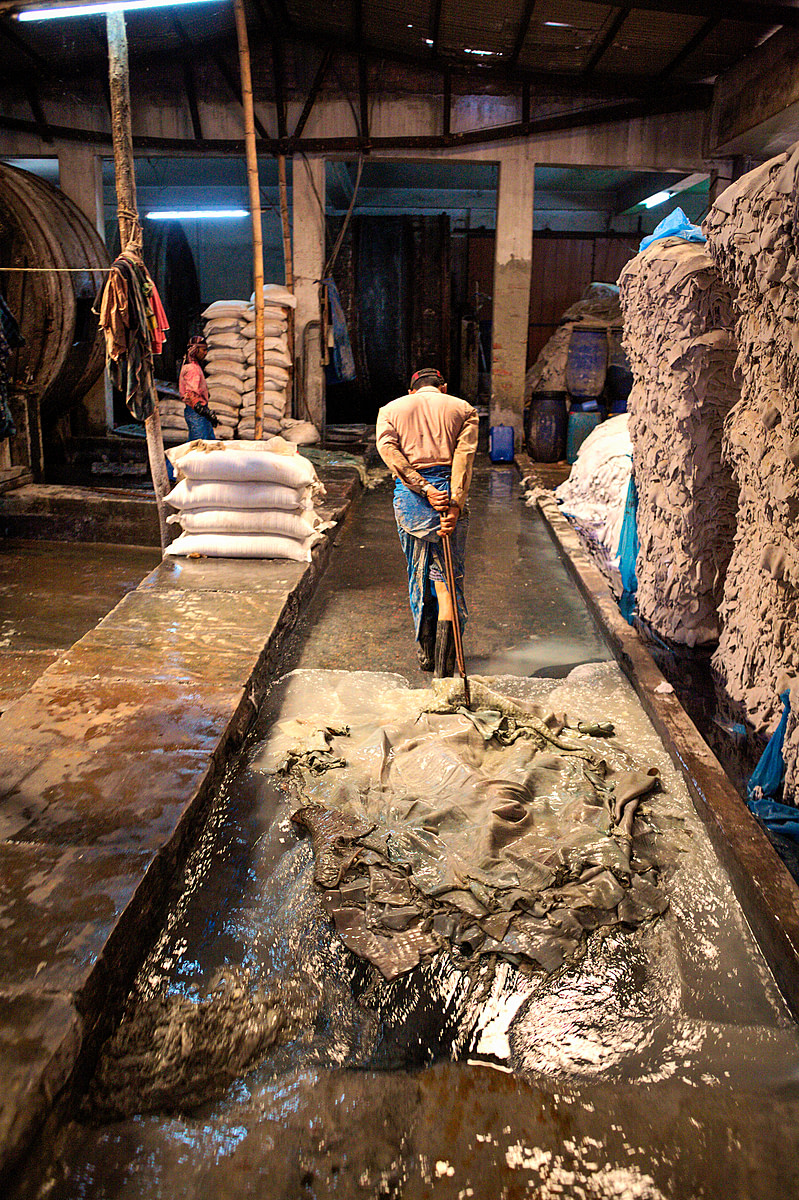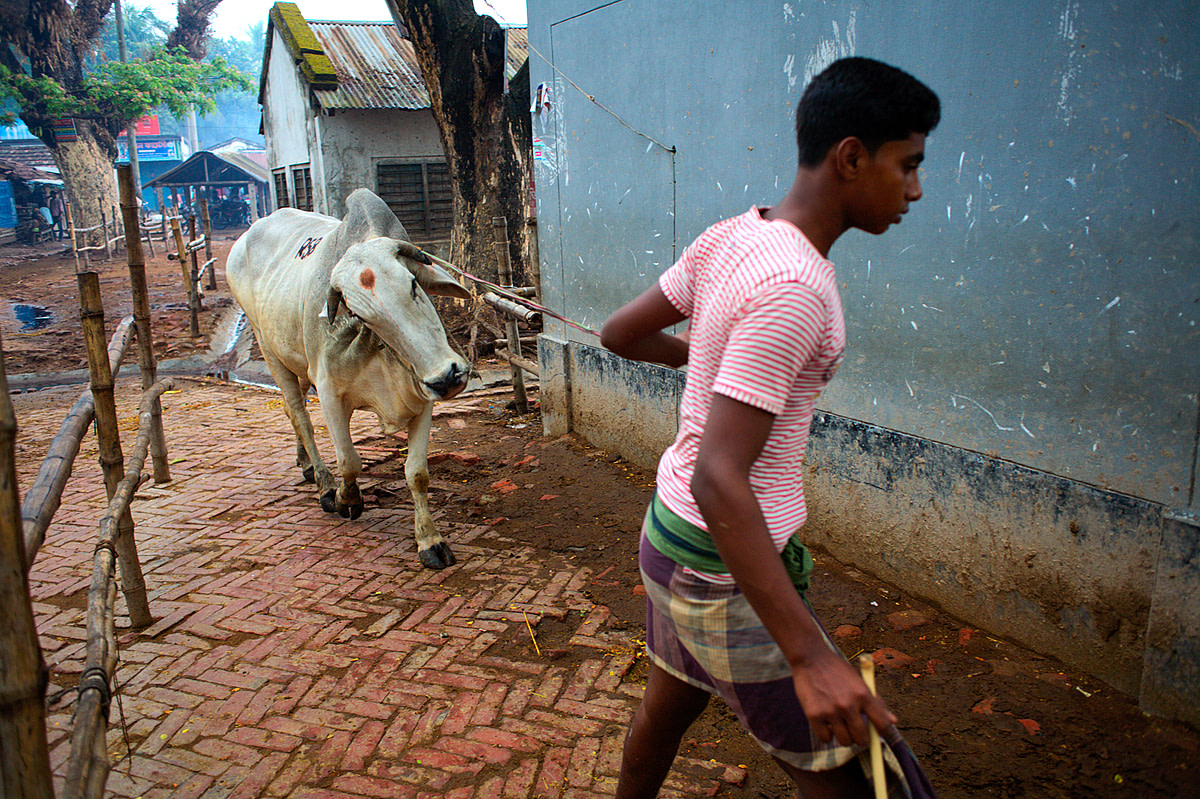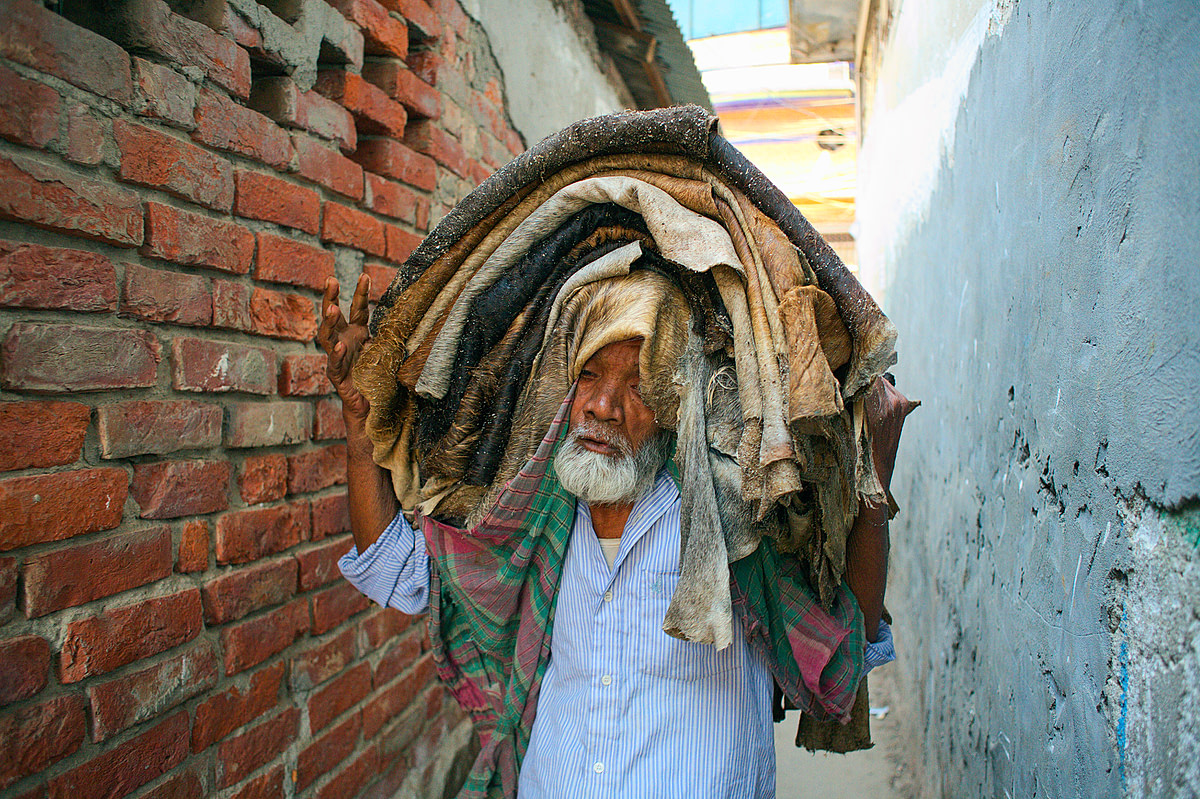An aerial view of buyers and sellers at the cattle market of Bagachra, one of the largest cattle markets in southwest Bangladesh, 2015.
Christian Faesecke / We Animals
[Content warning: Contains confronting images and/or video footage]
Where does leather come from? The label may offer a country’s name, but what’s the story behind that single label?
Answering where leather comes from is a complex, international story across a 4,000 km border. It’s not a byproduct of meat production, but an industry unto itself. We Animals contributor Christian Faesecke documents how cows – who are considered holy – are trafficked from India to Bangladesh where they are killed for leather.
Photographer: Christian Faesecke
A livestock truck enters the cattle market of Gabtoli in the western district of the capital city Dhaka. In the early morning, fully laden trucks arrive nearly every minute. The malnourished cattle are unloaded into wooden holding pens, where they are fed and given water. Bangladesh, 2015.
Christian Faesecke / We Animals
Due to strict prohibitions against killing cattle in India, a black market cattle trade between India and Bangladesh has emerged. Indian cattle used for leather are transported from the Ganges River via regional Indian cattle markets to the border. In the livestock markets of Bangladesh, these animals are re-certified and declared Bangladeshi cattle. In cramped conditions, the animals are then transported to the slaughterhouses of Dhaka, where an industrial process starts, creating river pollution, sick workers, and cheap leather for world markets.
One of the cattle who has collapsed from exhaustion despite being kicked and beaten, lies in the dirt at the cattle market in Bagachra. The owners have covered the animal’s muzzle with a cloth and are slowly pouring water over it. This technique, also known as water-boarding, is used to induce a fear of drowning and force the animal to get up. Bangladesh, 2015.
Christian Faesecke / We Animals
At the cash desks of Bagachra in southwest Bangladesh money frantically changes hands. Each purchase has to be documented by the local authorities and confirmed with a receipt. For this authentification buyers pay approximately 500 Taka (5,75$) and are then the official owner of the cow. Bangladesh, 2015.
Christian Faesecke / We Animals
Sellers smuggle approximately two million cattle annually over the 4,000 km border, often fetching twice the local market rate. The journey is so difficult for many of the cattle that smugglers will waterboard them to force them to continue walking after they have collapsed. The technique, most infamously known as a torture method used in interrogations, reproduces the sensation of drowning. At night, the animals are usually smuggled in large herds over the difficult-to-control border to Bangladesh.
Bagachra, a small village near the border, possesses the largest cattle market in southwest Bangladesh, where the Indian cattle are reportedly re-certified to local ones. From here, the animals can be legally re-sold and transported. They are tightly packed into cattle transporters and distributed all over Bangladesh where they are killed in abattoirs or at night by road-side slaughter.
In Hazaribagh, a part of western Dhaka reknowned for its tanneries, a worker bends over a cow hide. Using a specially formed knive, he removes the chemically dissolved layer of fat from the skin. Bangladesh, 2015.
Christian Faesecke / We Animals
A young cattle dealer pulls his animal to the market in Bagachra, a small town near the Indian border. It is one of the largest cattle markets in southwest Bangladesh. According to the proprietor several thousand cattle change hands here every market day. Bangladesh, 2015.
Christian Faesecke / We Animals
While most of the bodies are exported to the Gulf States for food, the skins are transported to Dhaka’s 200 tanneries, where tens of thousands of workers fall ill from the hazardous chemicals used in processing, which contaminate the rivers. Once processed, the leather is sold to global markets, where it is often impossible to know its origins from single-country labeling.
A contributory to the River Buriganga in Hazaribagh, Dhaka, is littered with rubbish and the remains of leather. According to a report by the Blacksmiths Institute of New York in 2013, Hazaribagh is the fifth most polluted area in the world. Bangladesh, 2015.
Christian Faesecke / We Animals
Christian’s photo report sheds light on the circumstances surrounding the global production and sale of leather, and shows the working conditions of people who are generally not seen by the end consumer.
Data sources: The Quint / The Guardian
Photographer: Christian Faesecke
To view more images from this collection, visit our Leather Industry gallery.

